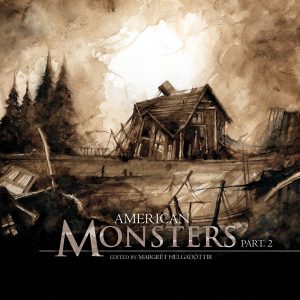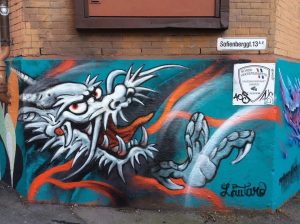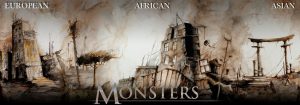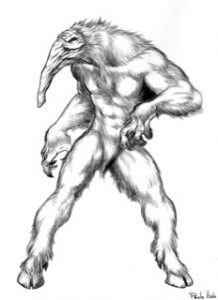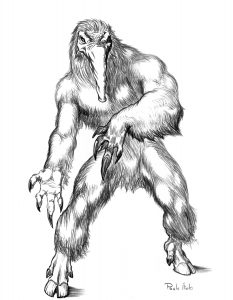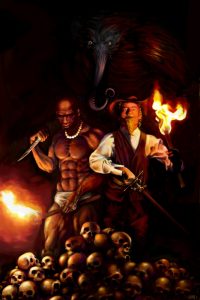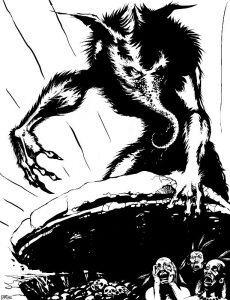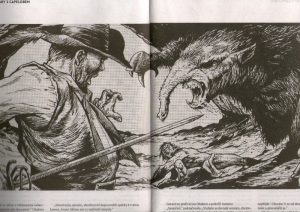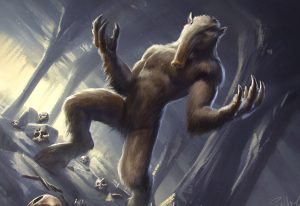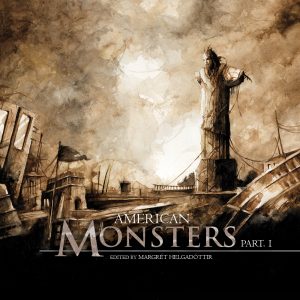“Monsters and Minnesota Nice”
When I started working on ideas for my story for this anthology, I went looking for local monsters. By “local,” I mean monsters unique to Minnesota, which is where I live now. I’m a transplant from the East Coast, even though I actually moved here from the next state south. What matters from the perspective of living here now is that I didn’t grow up here.
Growing up here is very important from a social standpoint, at least for white Minnesotans of mostly Scandinavian descent. It means you went to school here, share a common slang (“hot dish” = casserole), have an enthusiasm for the local sports teams and an affinity for cold weather activities. And it means you have a solid grasp on “Minnesota Nice.” The latter means that you are polite, friendly on the surface, adverse to conflict and not infrequently passive aggressive (people who grew up here will take polite umbrage at this). You also talk about the weather a lot because it can, in fact, kill you.
Minnesota Nice does not lend itself to monsters. Sure, there are ghosts, the occasional serial killer and a fair number of historical atrocities to be found in Minnesota’s history, but monsters? Nope. There’s Paul Bunyan, the legendary lumberjack, and his beloved blue ox, Babe, performing legendary deeds in the northern woods. There are hoaxes, like the Minnesota Iceman, and possible hoaxes, like the Kensington Runestone. But nothing that speaks to the dark, primeval terrors that keep readers awake at night, ready to jump at any noise.
For those, I had to go back further. The Native people of the Great Lakes region, the Anishinaabe, the Ottawa and other tribes, had a legend that grew out of the brutal winters (yes, they are often as bad as you’ve heard): a huge gaunt ice-coated monster, reeking of carrion, born of greed and selfishness. The windigo or wendigo is a cannibal: once human, it preys on other humans when turned. In some stories, they hunt and eat people, in others, they can also possess them, like a ghost or a spirit. It is nearly impossible to escape them, harder still to kill them.
They are a lesson as much as they are a threat and a warning. Being selfish and not caring for others during a winter in this region can be a death sentence. In contemporary context, neighbors who won’t give you the time of day ordinarily will appear out of the frozen wasteland and help dig your car out. You’ll wake up in the morning and someone has cleared the two feet of snow on the sidewalk in front of your house because it’s about survival and they were running the snow blower around the block anyway. We do not survive alone.
Not too surprisingly, white colonists quickly absorbed the legend, adding elements of their own. From Algernon Blackwood to contemporary movies, comics and video games, the wendigo eternally stalks the north woods. This later version of the wendigo is often more like an animal than an altered person, but is no less deadly for all that.
What would call to a being like this one? Greed, selfishness and cannibalism, certainly. And, perhaps, the kind of person who despises those who they considers weaker, who manipulates and bullies others into doing what they want, even against their own best interests. Someone who is controlling and petty, the center of their own universe. This is what I imagine in my story, “Hunger,” where the title refers to both monster and prey. Or are they both monsters, each in their own way? Food for thought as well as nightmare.
